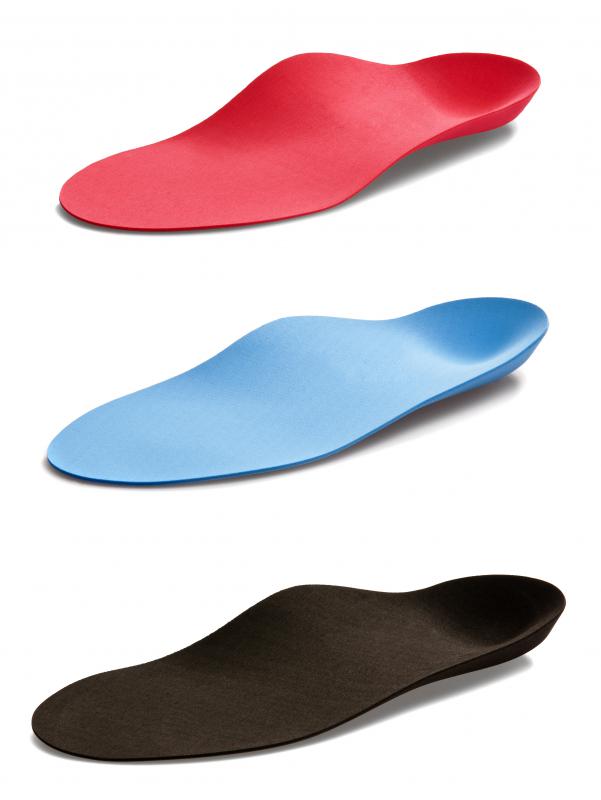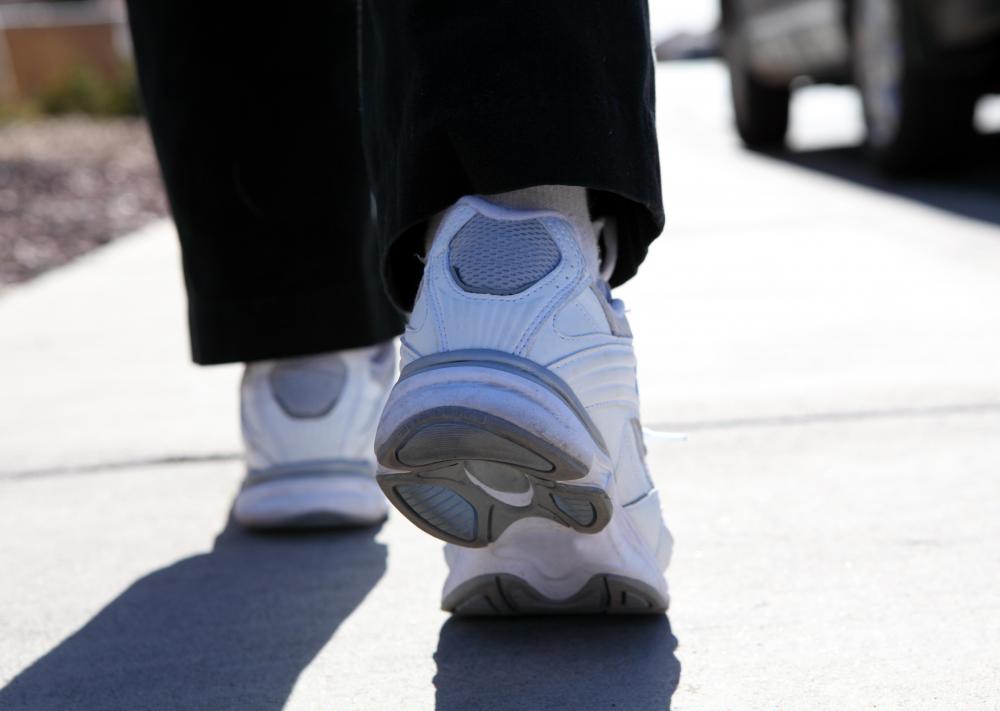At WiseGEEK, we're committed to delivering accurate, trustworthy information. Our expert-authored content is rigorously fact-checked and sourced from credible authorities. Discover how we uphold the highest standards in providing you with reliable knowledge.
What Is Pronation Syndrome?
Pronation syndrome, also commonly referred to as overpronation, is the chronic rolling of one’s foot or feet inward during walking or running. Over time, pronation syndrome can cause a variety of problems, including pain and impaired posture. Those who suspect they may tend to overpronate should consult a physician. If pronation syndrome is identified, potential treatments can include wearing supportive shoes and using orthotic insoles.
The human foot and ankle is a complex machine, consisting of a large number of bones, joints, tendons, muscles, and ligaments that work in unison to make each step possible. In some people, however, the function of this “machine” is slightly irregular, and one or both feet tend to roll inward more than they should while walking or running. The chronic inward rolling of the foot or feet is commonly referred to as pronation syndrome or overpronation.

Left untreated, pronation syndrome can cause a number of problems. Perhaps the most common problem which arises from this condition is pain, which may affect the feet, ankles, lower or upper legs, hips, back, or even the neck and shoulders. In extreme cases, the postural imbalance caused by the constant inward rolling of the foot and, by extension, the leg, can cause the upper segment of the spine to naturally “compensate” by curving away from the affected foot. This in turn can cause further pain and permanently impaired posture.

Those who suffer from chronic pain throughout the body as well as those who notice that the soles of their walking or running shoes tend to show excessive wear on their inner edges may suffer from pronation syndrome. To confirm or rule out the condition, it is important to consult with an orthopedic physician. In order to determine whether an individual tends to overpronate, a physician may conduct a physical examination, analyze the individual’s gait as he walks on a treadmill, and ask questions about issues like pain and exercise routines.
Treatment for pronation syndrome may be as simple as wearing supportive shoes. Staff members at specialty shoe stores are often trained to help customers with gait issues choose shoes that will fit their specific support needs. In more severe cases, it may be necessary to purchase orthotic inserts, which may need to be specially made to conform to one’s foot. Generally, an orthopedic physician can provide further information about whether orthotics are a good treatment option, and how they can be obtained.
AS FEATURED ON:
AS FEATURED ON:












Discuss this Article
Post your comments